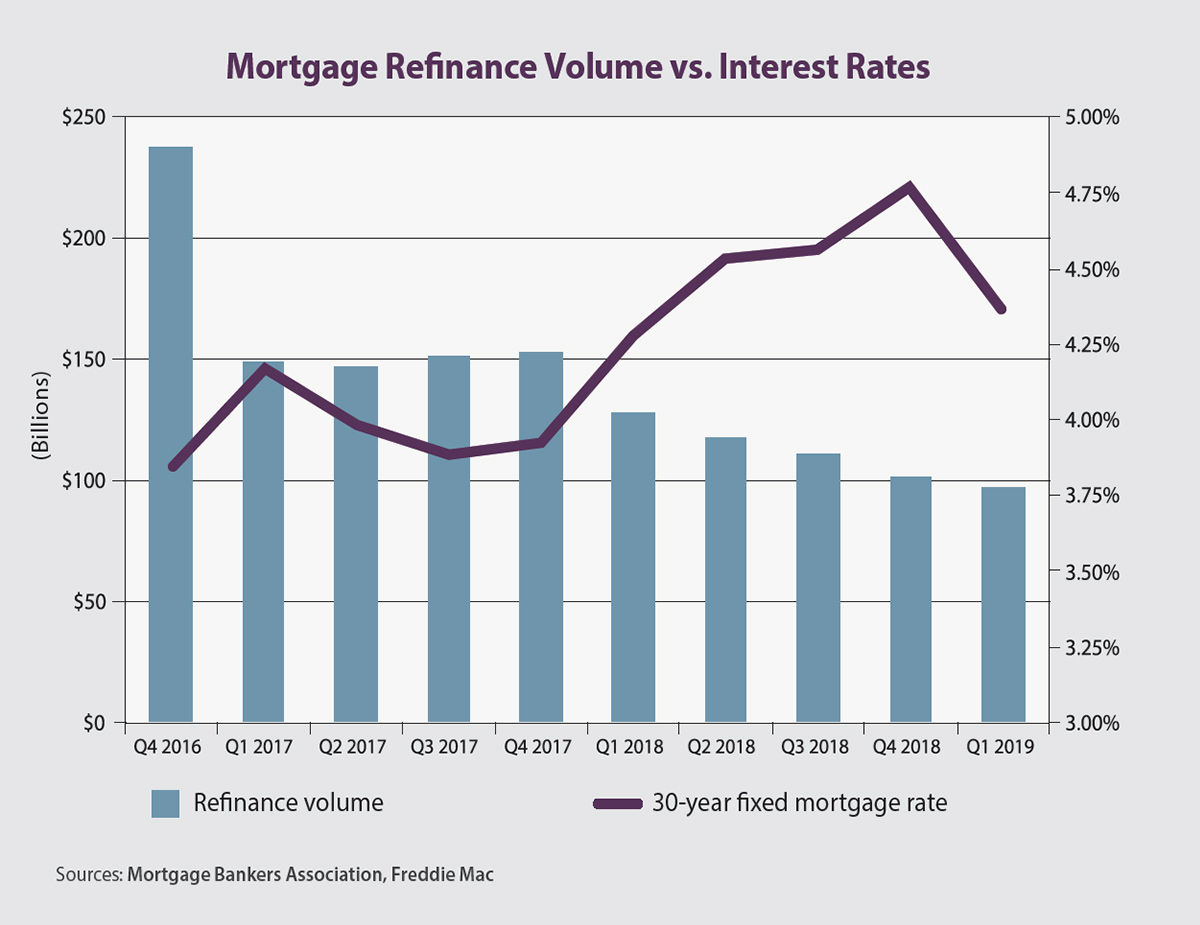After a shaky start to this year, which included a prolonged government shutdown and stock-market volatility, the U.S. economy has discovered its sea legs and is experiencing somewhat smoother sailing.
Economic growth came in at a solid 3.2 percent in first-quarter 2019, with most of the expansion the result of stronger net exports and businesses boosting their inventories. More importantly, the labor market continues to thrive. Unemployment remained well below 4 percent, businesses continue to hire at a steady rate and wages are increasing at a faster rate than inflation. With job openings remaining near record levels, upward pressure on wage growth is likely and the Mortgage Bankers Association (MBA) expects the unemployment rate will average 3.7 percent this year.
There is guarded optimism that the strong first quarter for the economy will continue for the rest of the year. Slowing global economic growth, trade disputes with other countries and geopolitical concerns — while helping to keep interest rates low — loom as threats to the overall health of the U.S. economy. Furthermore, inventory investment and trade, which were key contributors to the solid economic expansion at the start of the year, tend to shift growth dramatically between quarters. A pullback could be in the cards for upcoming quarters, which is why our gross domestic product forecast for the full year still remains at about 2 percent.
Last year was a mixed bag for the housing market. Fortunately, the first few months of this year looked better. Lenders in most parts of the country said that favorable local economic conditions led to increased demand for mortgages. Throw in rates that edged close to 4 percent, rather than the nearly 5 percent rates seen in late 2018, and the spring housing market saw a nice pickup in activity. And some homeowners with high loan balances have taken advantage of declining rates to refinance, which is part of the reason why the MBA raised its 2019 forecast for refinance volume to $431 billion this past April, up from $415 billion in March.
For home shoppers, supply and affordability conditions are improving. In addition to lower borrowing costs, many markets continue to see decelerating home-price growth and rising inventory levels. This year’s MBA forecast calls for purchase-loan originations to increase 4.2 percent to $1.24 trillion, but ultimately, housing inventory needs to pick up to meet demand. Although this is improving, recent sales data showed weakness in the lower price tiers, which is a continued reflection of insufficient listings where demand is the strongest — entry-level homes.
There are signs homebuilders have shifted the mix of their business more toward starter homes for first-time buyers, but overall, residential construction has slowed on an annual basis in recent months and is still not keeping up with job and population growth. It is good to see homebuilder confidence remains strong, however, as builders saw solid demand during the spring.
The overall mortgage market looks healthy. Credit availability is expanding at a responsible rate and despite a quarterly uptick in mortgage delinquencies in the first three months of 2019, the 4.42 percent delinquency rate was 21 basis points lower than a year earlier. A solid job market and economy continues to keep mortgage delinquencies and foreclosure inventories at low levels.
The Federal Reserve left short‐term rates unchanged at its May meeting and continues to hint that it will remain patient, which would mean keeping rates at their current level at least through the end of this year. Additionally, the Fed indicated the likelihood of adding to its U.S. Treasury securities holdings starting this fall, while allowing mortgage-backed securities to continue rolling off its balance sheet.
Steady job growth, higher incomes and low mortgage rates — which we forecast to average about 4.4 percent for the year — are a good recipe for sustained housing demand. If supply meaningfully rises closer to a balanced market for buyers and sellers, the mortgage industry and consumers stand to benefit in the coming months.
Author
-

Mike Fratantoni is chief economist and senior vice president of research and industry technology at the Mortgage Bankers Association (MBA). He is responsible for overseeing MBA’s industry surveys, benchmarking studies, economic and mortgage origination forecasts, industry-technology efforts, and policy-development research for the single-family and commercial/multifamily markets. Prior to joining MBA, Fratantoni worked in risk management and senior economist roles at Washington Mutual and Fannie Mae.





